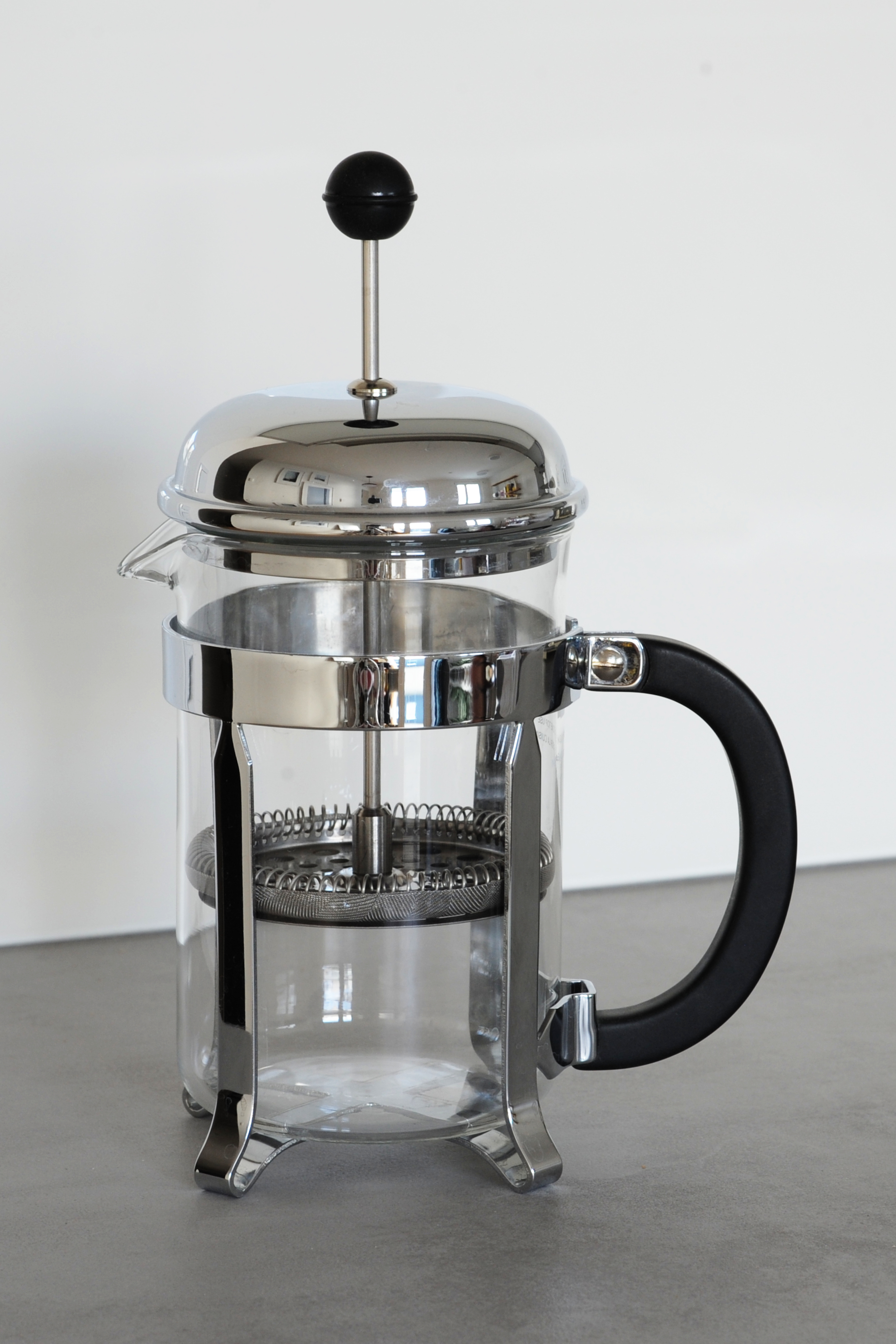Coffee Brewing 101
- Introduction to Coffee
- Coffee Brewing Basics
- French Press Brewing Technique
- Pour Over Brewing Technique
- Espresso Brewing Technique
- Aeropress Brewing Technique
- Cold Brew and Iced Coffee Techniques
- Course Wrap-up and Final Project
French Press Brewing Technique
Introduction to French Press

Coffee brewing device.
The French Press, also known as a press pot or plunger pot, is a simple yet effective method for brewing coffee. It's known for its ability to produce a rich, full-bodied coffee that's loved by many coffee enthusiasts worldwide.
History of the French Press
The French Press was first patented by Italian designer Attilio Calimani in 1929. However, it was the French who popularized this brewing method, hence the name "French Press." Over the years, the design has been refined, but the basic brewing principle remains the same.
Understanding the Components of a French Press
A French Press consists of a cylindrical beaker, usually made of glass or stainless steel, a lid, and a plunger with a mesh filter attached. The mesh filter is designed to separate the coffee grounds from the water after brewing.
- Beaker: This is where the coffee grounds and hot water mix. It's usually made of glass, but can also be found in stainless steel or ceramic.
- Lid: The lid helps to keep the heat in while the coffee is brewing. It also has a hole to allow the plunger to pass through.
- Plunger and Mesh Filter: The plunger is used to press the coffee grounds to the bottom of the beaker after brewing. The mesh filter attached to the plunger separates the coffee grounds from the liquid.
Advantages and Disadvantages of Using a French Press
Advantages:
- Simplicity: The French Press is easy to use, with no need for electricity or complicated machinery.
- Control: You have complete control over the brewing time, water temperature, and coffee-to-water ratio.
- Rich Flavor: The French Press produces a full-bodied coffee, as the coffee oils are not absorbed by a paper filter.
Disadvantages:
- Cleanup: Cleaning a French Press can be a bit messy, as the used coffee grounds need to be scraped out of the bottom.
- Sediment: Some small coffee particles may pass through the mesh filter, leading to a bit of sediment in your cup.
Types of Coffee Beans Suitable for French Press Brewing
When it comes to choosing coffee beans for French Press brewing, it's best to go for medium to dark roasts. These roasts tend to have a robust flavor that stands up well to the French Press brewing method. Also, consider using freshly roasted beans and grinding them just before brewing to get the best flavor.
In conclusion, the French Press is a simple, yet effective way to brew coffee. It gives you control over the brewing process and produces a rich, full-bodied coffee. However, it does require a bit of cleanup and may leave some sediment in your cup.